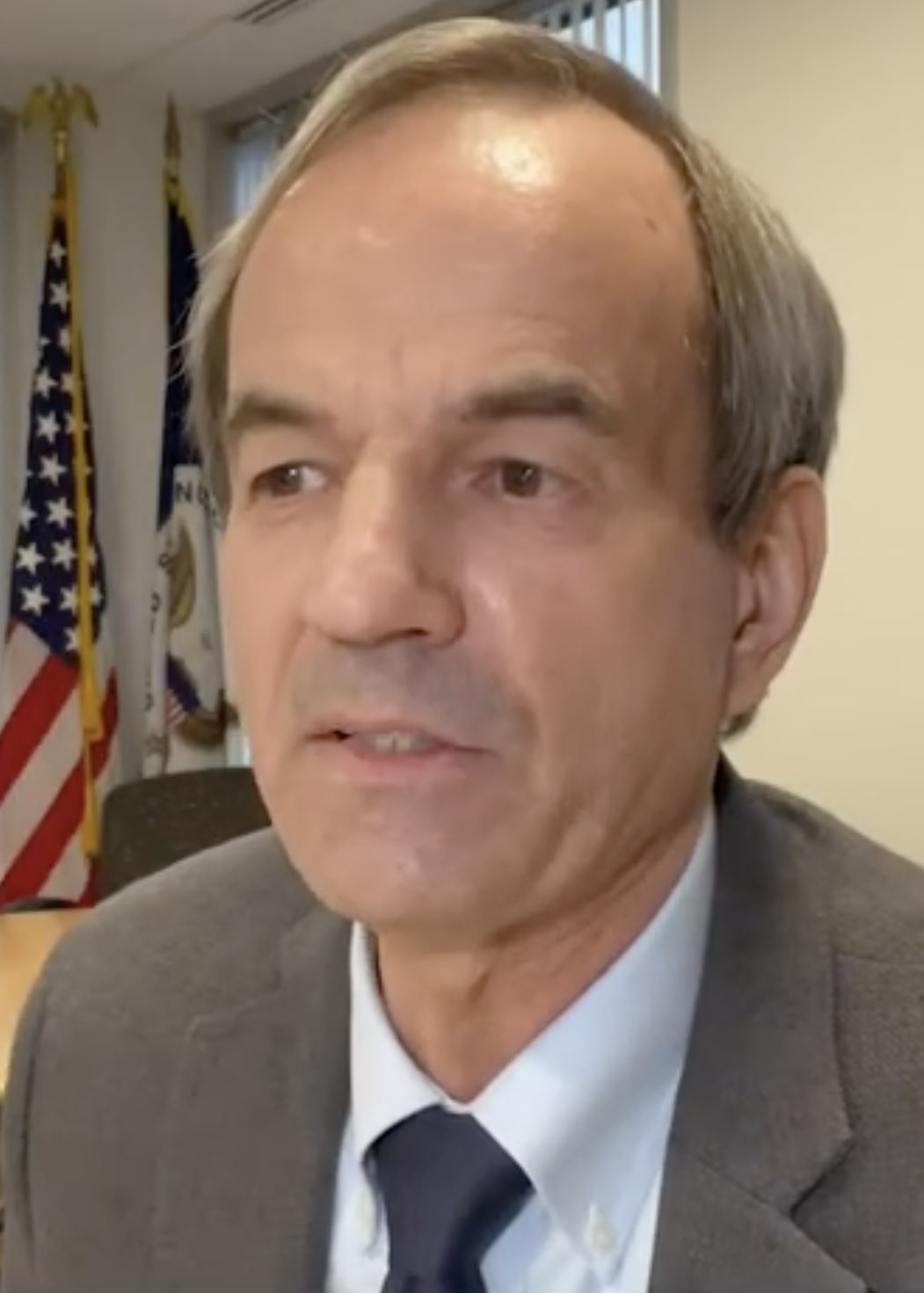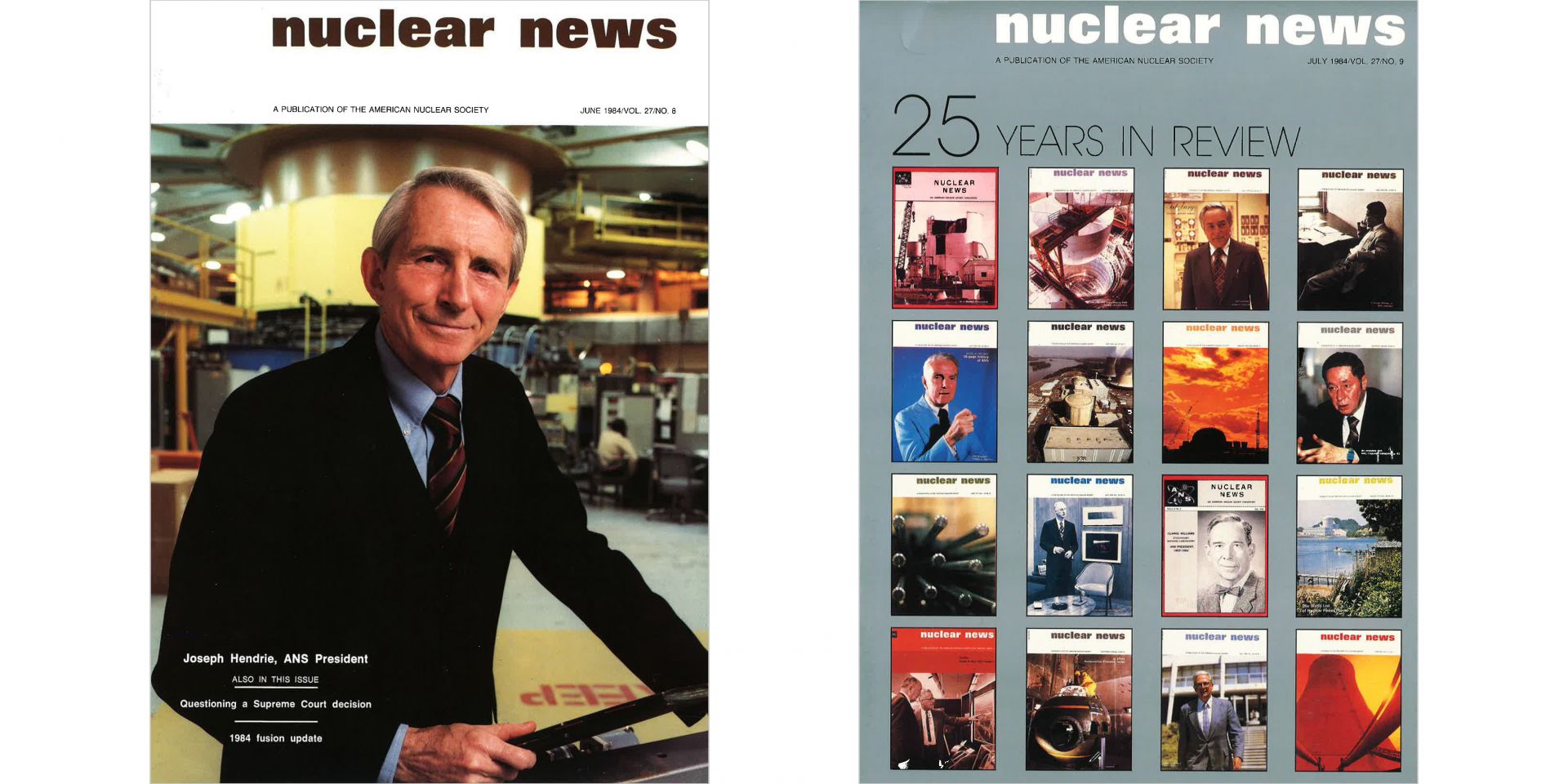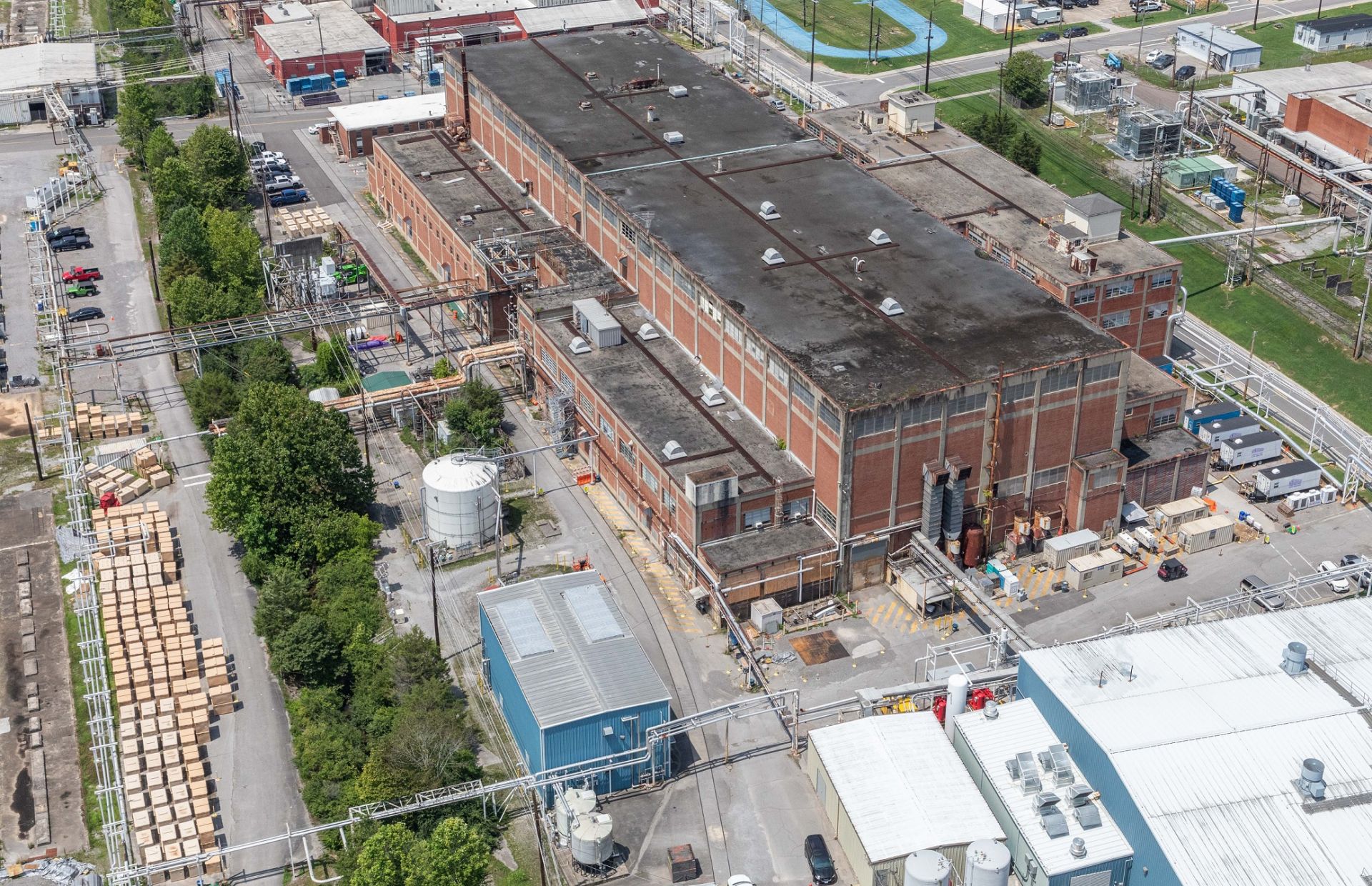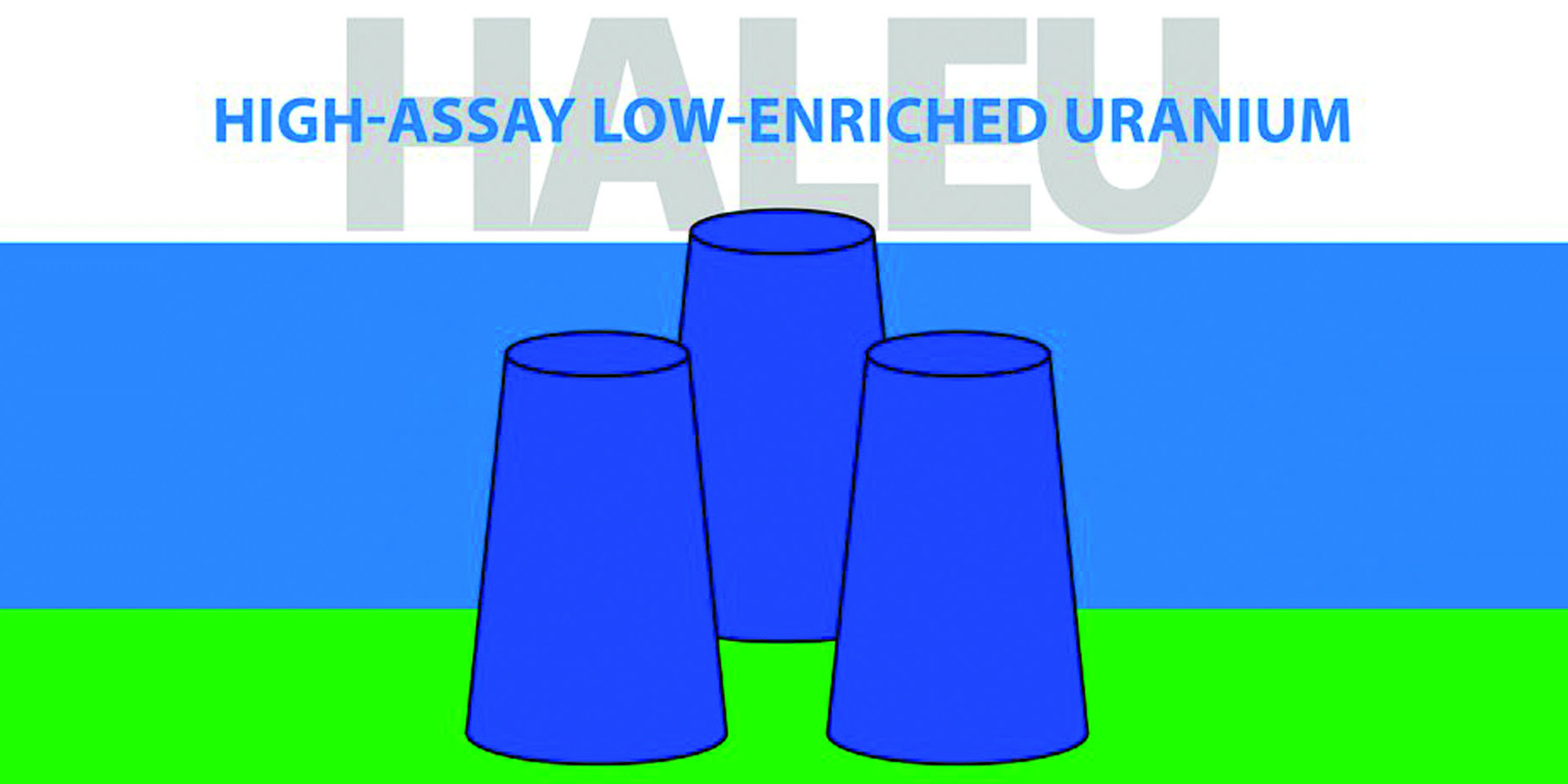New plant review ordered following Japan’s earthquakes
Japanese regulators have ordered further review at a nuclear power plant in central Japan following a series of deadly earthquakes that rocked the country on New Year’s Day.

Japanese regulators have ordered further review at a nuclear power plant in central Japan following a series of deadly earthquakes that rocked the country on New Year’s Day.

Another calendar year has passed. Before heading too far into 2024, let’s look back at what happened in 2023 in the nuclear community. In today's post, compiled from Nuclear News and Nuclear Newswire are what we feel are the top nuclear news stories from October through December 2023.
Stay tuned for the top stories from the rest of the past year.

Furstenau
Raymond V. Furstenau, currently head of the Nuclear Regulatory Commission's Office of Research, has been named acting executive director for operations, effective January 27, upon Daniel Dorman's retirement and until a permanent replacement has been selected.
The EDO is the highest-ranking NRC career position and carries the responsibilities of overseeing the agency's operational and administrative functions and serving as the chief operating officer.
Praise: "Ray is a seasoned executive with exemplary communication and management skills. He's the right person to lead the NRC staff while the commission works together to identify a permanent executive director for operations," said NRC chair Christopher Hanson.

The Canadian Nuclear Safety Commission has decided to amend Canadian Nuclear Laboratories’ operating license for the Chalk River Laboratories, allowing the construction of a near surface disposal facility (NSDF) for low-level radioactive waste on the nuclear research site in Deep River, Ontario.

The United Kingdom’s Department for Energy Security and Net Zero announced plans on January 7 to invest £300 million (about $383 million) to build a high-assay low-enriched uranium (HALEU) enrichment facility in northwest England. The goal? To “end Russia’s reign as the only commercial producer of HALEU.” Britain is now the first European country to declare that it will begin HALEU enrichment in a bid for supply chain security.

This article is the first in a series that will examine the history of small modular reactors.
Small and medium reactors have been an integral part of the U.S. nuclear power enterprise since the early days of the industry. Many of the designs for the next generation of reactors are rooted in the designs of the 1950s and ’60s, but the development and push for deployment have gained momentum only within the last decade.
This recent momentum led a reader of Nuclear News to suggest an article reviewing the history of small modular reactors. NN staff jumped on this idea, deciding a series of articles would do better justice to such a complex and interesting topic.
The United Kingdom released plans yesterday for the biggest expansion of nuclear power in 70 years. Officials outlined Civil Nuclear: Roadmap to 2050 as an opportunity to improve the United Kingdom’s energy independence from foreign sources as it looks to build a new power station and invest in advanced nuclear fuel production.

Another calendar year has passed. Before heading too far into 2024, let’s look back at what happened in 2023 in the nuclear community. In today's post, compiled from Nuclear News and Nuclear Newswire are what we feel are the top nuclear news stories from July through September 2023.
Stay tuned for the top stories from the rest of the past year.

French energy supplier Électricité de France announced this week it will invest $1.7 billion to keep its U.K. fleet in production through 2026.

Joseph Hendrie, Brookhaven National Laboratory physicist, NRC chair, and ANS past president (1984–1985), passed away in his home in Bellport, N.Y., on December 26 at the age of 98.
Hendrie, an American Nuclear Society member since 1956, was a leader in the nuclear community for much of his 45 years in nuclear reactor safety research. He served as the deputy director for technical review of the Atomic Energy Commission’s Directorate of Licensing from 1972 to 1974 and then was appointed chair of the NRC in 1977 (serving a second stint as chair in 1981—the only person to serve two nonconsecutive terms in that role).
The Department of Energy, in conjunction with Massachusetts Institute of Technology and Texas A&M University, will conduct a biweekly webinar series aimed at providing a broad overview of nuclear waste management and disposal in the United States as well as the latest research activities. The target audience is undergraduate and graduate students in science, engineering, policy, sociotechnical, and social science programs.
As Spain prepares to shutter its fleet of seven nuclear power plants, France considers adding more than 14 new ones.

Another calendar year has passed. Before heading too far into 2024, let’s look back at what happened in 2023 in the nuclear community. In today's post, compiled from Nuclear News and Nuclear Newswire are what we feel are the top nuclear news stories from April through June 2023.
Stay tuned for the top stories from the rest of the past year.

The Department of Energy announced that its Oak Ridge Office of Environmental Management (OREM) is moving ahead with a slate of projects this year that will alter the Tennessee site’s skyline, remove inventories of nuclear waste, and complete a major phase of cleanup.

The Department of Energy issued a final request for proposals (RFP) on January 9 for uranium enrichment services to help establish a commercial domestic supply of high-assay low-enriched uranium (HALEU) to fuel a potential fleet of advanced reactors. Without HALEU, advanced reactors will not be able to proceed past the demonstration stage. And given the investments of capital and time required to license and build a nuclear power plant—even a smaller, more efficient advanced reactor—eliminating fuel uncertainty could be what a utility needs to invest in new construction.

Another calendar year has passed. Before heading too far into 2024, let’s look back at what happened in 2023 in the nuclear community. In today's post, compiled from Nuclear News and Nuclear Newswire are what we feel are the top nuclear news stories from January through March 2023.
Stay tuned for the top stories from the rest of the past year.
A new material based on amidoxime chemical groups may allow electrochemical extraction technology to extract uranium ions from seawater more efficiently than previous methods, according to a recent study published by the American Chemical Society’s ACS Central Science. If put into practical use, the new method, which was developed by researchers in China, could offer an environmentally sustainable source of fuel for nuclear power plants.

Ken Petersen
president@ans.org
A big thank-you to the American Nuclear Society Young Members Group for all it accomplished at the Young Professionals Congress (YPC) and President’s Special Session at the 2023 ANS Winter Conference and Expo.
The YPC was held on Saturday, November 11. Its chair, Miriam Kreher, and the YPC planning committee did an excellent job organizing and executing the congress. Its three tracks had something for everyone, including knowledge expansion and soft skills training. The speakers at the congress, including Katy Huff, assistant secretary for nuclear energy, were outstanding in every category.
The President’s Special Session was organized by the Young Members Group (YMG). Matt Wargon, YMG chair, and the planning committee did an incredible job. We kicked around several ideas for a theme before landing on “Space: The [Next] Nuclear Frontier.”

Radiopharmaceutical biotech company ITM Isotope Technologies Munich announced it has received regulatory approval to begin production of the medical radioisotope lutetium-177 at the company’s NOVA facility in Neufahrn, near Munich, Germany.
